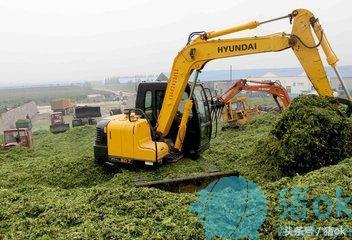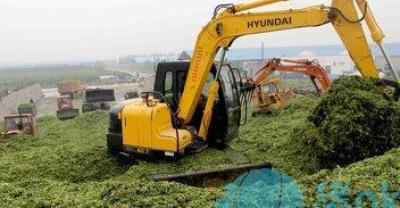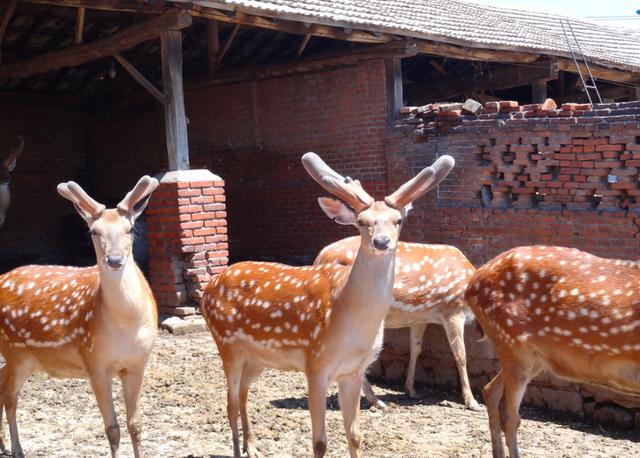What are the advantages and disadvantages of silage corn and non-silage corn farming?
With the continuous expansion of the breeding scale of herbivorous livestock such as cattle and sheep, at present, the application of silage in pigs has also been paid attention to by the industry, and the demand for green words is increasing. In response to the national call to "develop straw animal husbandry" and "adjust livestock and poultry structure animal husbandry", various farms have made great efforts to promote the lexical utilization of crop straw, so that the quality of silage has been significantly improved.

Corn straw is the most widely used crop straw, and its utilization has experienced two stages: simple corn straw silage and whole-plant corn silage. At present, most farms carry out whole-plant corn silage, that is, green corn straw and ear green succulent feed are loaded into the human cellar together, under the condition of anaerobic strips, lactic acid is produced by lactic acid bacteria fermentation, so as to inhibit the reproduction of other microorganisms and prevent them from continuing fermentation so that their nutrients can be preserved.
It is understood that silage corn is widely used in dairy cattle breeding, not only most farms use corn silage words, but also basically ensure that they are fed throughout the year. It turns out that silage corn is mainly concentrated in autumn, summer sowing corn is stored, and spring sowing corn is less. To alleviate the problem of insufficient forage supply of herbivorous livestock such as dairy cows in summer and autumn, some farms actively organize silage of spring sowing corn to realize multi-season silage of corn. In recent years, while vigorously promoting the use of silage corn feed in dairy farms, some beef cattle and sheep farms also began to use silage.
There are also many problems in silage corn. At present, some farms are lack of understanding of the transformation of economic development mode, comprehensive utilization of natural resources consumption, development of grain-saving and straw-based animal husbandry, and lack of enthusiasm for the silage utilization of crop straw. content with traditional and customary practices. In addition, the problem of funds is also a great challenge for silage corn to develop grain-saving animal silage corn. Some farms are reluctant to invest, thinking that the investment in the construction of silage pits and the purchase of silage machinery and facilities is relatively large, and the funds occupied by self-growing or purchasing silage corn are concentrated, so they are content to make a small fuss without seeing the potential benefits.
According to the analysis of experts, silage corn feed has unique natural advantages. From the point of view of the farm, feeding corn silage can make dairy cows eat high-quality green all the year round in the same management, milk yield can be increased by 10% to 14%, milk fat rate can be increased by 10% to 15%, milk protein can reach more than 3%, milk fat can reach 4%, and the purchase price of raw milk can be increased by more than 7%, and the economic benefit is significantly improved.
From the perspective of corn growers, the general gross income of corn is more than 1000 yuan per 667m2 (1 mu) after maturity; if the whole plant corn silage is carried out in the wax ripening period, the yield is 3.540 tons per 667m2. According to the current purchase price, the gross income is 1100 yuan, and the income is basically the same. But in planting, silage corn can be properly close planting, the yield can reach more than 6 tons per 667m2, such as planting special silage corn varieties, the yield will be higher, the income can reach 1600 yuan per 667m2, or even higher; and the harvest of whole-plant corn in the wax maturity period to sell grain and straw can save corn harvesting, threshing, drying and other labor.
The above is the whole content of "silage corn is right or wrong". For more wonderful content, please continue to follow Pig OK. Responsible Editor: Arin
- Prev

"traditional Chinese Medicine Culture" talking about synovial sac mycoplasma from the point of view of traditional Chinese medicine
Synovial sac mycoplasma synovial sac mycoplasma disease, also known as chicken infectious synovitis, typical symptoms are swelling of tarsal and metatarsal joints, lameness, and even deformation.
- Next

The sika deer bred in the rural areas of Northeast China is full of treasures and has high economic value.
Speaking of deer antler, one of the three treasures in Northeast China, I believe many friends know that the deer antler mentioned here is deer antler, which is a valuable Chinese herbal medicine...
Related
- On the eggshell is a badge full of pride. British Poultry Egg Market and Consumer observation
- British study: 72% of Britons are willing to buy native eggs raised by insects
- Guidelines for friendly egg production revised the increase of space in chicken sheds can not be forced to change feathers and lay eggs.
- Risk of delay in customs clearance Australia suspends lobster exports to China
- Pig semen-the Vector of virus Transmission (4)
- Pig semen-the Vector of virus Transmission (3)
- Five common causes of difficult control of classical swine fever in clinic and their countermeasures
- Foot-and-mouth disease is the most effective way to prevent it!
- PED is the number one killer of piglets and has to be guarded against in autumn and winter.
- What is "yellow fat pig"? Have you ever heard the pig collector talk about "yellow fat pig"?

